 W
WThe Republic of Central Lithuania or Central Lithuania, was a short-lived puppet republic of Poland created in 1920 without international recognition. It was founded after Żeligowski's Mutiny, when soldiers of the Polish Army, mainly the 1st Lithuanian–Belarusian Infantry Division under Lucjan Żeligowski, fully supported by the Polish air force, cavalry and artillery, attacked Lithuania.
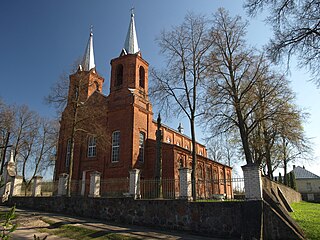 W
WAdutiškis is a town in Švenčionys district municipality, in Vilnius County, in northeast Lithuania. According to the 2011 census, the town has a population of 689 people. The town is located near Kamaja river, and at the border with Belarus.
 W
WArmy of Central Lithuania - armed forces of the state of Central Lithuania proclaimed by General Lucjan Żeligowski on October 12, 1920.
 W
WAshmyany is a town in Grodno Region, Belarus, located at 50 km from Vilnius. It is the capital of the Ashmyany District. It lies in the basin of the Ashmyanka River. It is also known as "Aschemynne" in the chronicles of the Teutonic Knights. It was the birthplace of Lucjan Żeligowski, a renowned Polish general and military commander and Abba Kovner, Jewish partisan leader during World War II and Israeli poet.
 W
WBaruny is a village in Belarus, not far from the town of Ashmyany. In the 18th and 19th centuries the local Basilian monastery was famous for its school, where many of young local noblemen such as poet Antoni Edward Odyniec and writer Ignacy Chodźko received their primary education. The monastery originally rose into prominence because of the venerated image of Virgin Mary, which is still preserved in the church in our days.
 W
WBezdonys is a town in Lithuania, located to the north of Vilnius, within the Vilnius district municipality. It is best known for the 1908 Bezdany raid, one of the most daring and successful train robberies in history. According to the Lithuanian census of 2011, the town had 743 inhabitants.
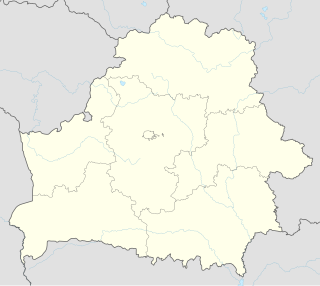 W
WBraslaw or Braslaŭ is a town in the Vitebsk Region of Belarus, an administrative center of the Braslaw District.
 W
WBuivydžiai is a village in Vilnius District Municipality, Lithuania. According to the 2011 census, it had 272 residents. It is located some 17 kilometres (11 mi) east of Nemenčinė and 3 kilometres (1.9 mi) west of the state border with Belarus. The village is situated on the left bank of the Neris River near its confluence with tributary Buivydė.
 W
WJerzy Dąbrowski, Dąmbrowski, Dombrowski Junosza coat of arms, nom de guerre "Łupaszka" – cavalry officer with the rank of podpułkownik in the Polish Army of the Second Polish Republic, guerilla fighter.
 W
WDieveniškės is a town in the Vilnius County of Lithuania, about 6 kilometres (3.7 mi) from the Belarusian border in the so-called Dieveniškės appendix. It is surrounded by the Dieveniškės Regional Park.
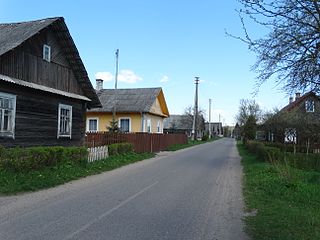 W
WPoškonys [poʃ'koːnʲiːs] is a village in Vilnius County, 14 kilometres (8.7 mi) southeast of Šalčininkai, Lithuania, in the so-called Dieveniškės appendix. While the inhabitants of Dieveniškės appendix are mostly Polish by ethnicity, Poškonys from the old days had a Lithuanian majority. The village itself belongs to ethno-cultural reserve and has an architectural monument status. There's a museum full of traditional Lithuanian craft, various household items, and a protected stone at the crossroad of Lastaučikai village. The 2011 census recorded a population of 129 living in Poškonys.
 W
WHalshany is a village and former town in the Grodno Region of Belarus. It is known as the former seat of the Olshanski princely family and the location of the ruined Halshany Castle.
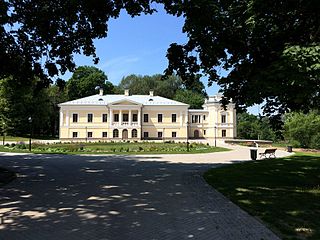 W
WJašiūnai is a town in Lithuania. It is situated on the Merkys River and an edge of the Rūdninkai Forest. According to the 2001 census, it had population of 1,879. The town's population is primarily Poles, with Lithuanians (12,4%) and Russians (8,4%).
 W
WKamai is a village in Belarus. It is located in the Pastavy Raion of Vitebsk Region, near the border between Belarus and Lithuania.
 W
WKreva is a township in the Smarhon District of Grodno Region, Belarus. The first mention dates to the 13th century. The toponym derived from the name of the Krivichs tribe.
 W
WLentvaris (pronunciation , is a town,, in eastern Lithuania, 9 km east of Trakai. It is a transportation hub, as several road and rail routes cross here. Lake Lentvaris is nearby.
 W
WMačiuliškės is a village in the Vilnius District Municipality, 4.2 kilometres from Lavoriškės.
 W
WMaišiagala is a historic town in Vilnius district municipality, Lithuania. It is located about 25 km (16 mi) northwest of Vilnius near the Vilnius–Panevėžys highway. According to the 2011 census, it had population of 1,636.
 W
WMedininkai is a village in Lithuania, located 26 km (16 mi) from Vilnius and 2 km (1.2 mi) from the Lithuanian–Belarusian border. According to the 2001 census, the village had 508 residents. Medininkai is the administrative center of an eldership. According to a 2010 eldership report, it had 1374 residents, of whom 92.3% were Polish, 3.2% Lithuanian, and 2.9% Russian.
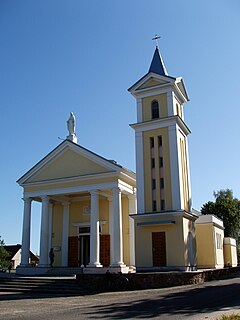 W
WMickūnai is a town in Vilnius district municipality, in Vilnius County, in southeast Lithuania. According to the 2011 census, the town has a population of 1,389 people.
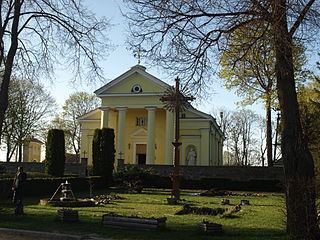 W
WMielagėnai is a town in Ignalina district municipality, in Utena County, southern Lithuania. According to the 2011 census, the town has a population of 236 people. There is John the Baptist church, build at 1790.
 W
WNarach Polish: Kobylnik, Lithuanian: Naročius) is a village in Myadzyel District, Minsk Region, Belarus, by the Lake Narach.
 W
WNemenčinė (pronunciation , is a city in Vilnius district municipality, Lithuania, it is located about 20 kilometres north-east of Vilnius. Close to Nemenčinė forest was planted which forms a sentence Žalgiris 600 visible from the air.
 W
WRūdiškės is a city in the Trakai district municipality, Lithuania about 15 km south of Trakai.
 W
WJan Piotr Rządkowski (1860–1934) was a Polish military officer and a General of the Polish Army. He is best known as the commanding officer of the 1st Lithuanian-Belarusian Division during the Polish-Bolshevik War and then the commander of the armed forces of the Republic of Central Lithuania.
 W
WŠalčininkai is a town in Vilnius County, Lithuania, situated south-east of Vilnius, near the border with Belarus.
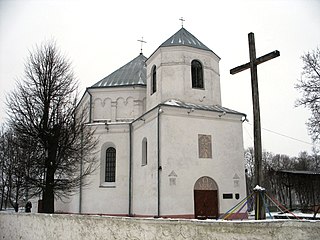 W
WSmarhonʹ or Smorgonʹ is a city in the Grodno Region of Belarus. It was the site of Smarhonʹ air base, now mostly abandoned. Smarhoń is located 107 km from the capital, Minsk.
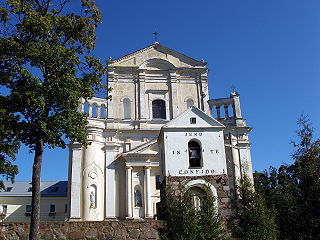 W
WŠumskas is a town in Vilnius District Municipality, in Vilnius County, in southeast Lithuania. According to the 2011 census, the town has a population of 919 people.
 W
WŠvenčionėliai is a city in Švenčionys district municipality. It is 10 km west of Švenčionys. The river Žeimena flows through Švenčionėliai.
 W
WŠvenčionys is a town located 84 kilometers (52 mi) north of Vilnius in Lithuania. It is the capital of the Švenčionys district municipality. As of 2011, it had population of 4,963 of which about 17% is part of the Polish minority in Lithuania.
 W
WTrakai is a historic city and lake resort in Lithuania. It lies 28 kilometres west of Vilnius, the capital of Lithuania. Because of its proximity to Vilnius, Trakai is a popular tourist destination. Trakai is the administrative centre of Trakai district municipality. The town covers 497.1 square kilometres of area and, according to 2007 estimates, is inhabited by 5,357 people. A notable feature of Trakai is that the town was built and preserved by people of different nationalities. Historically, communities of Karaims, Tatars, Lithuanians, Russians, Jews and Poles lived here.
 W
WTverečius is a town in Ignalina district municipality, in Utena County, eastern Lithuania. According to the 2011 census, the town has a population of 231 people.
 W
WValčiūnai is a village in Vilnius district municipality, Lithuania. According to the 2011 census, it had population of 1,874.
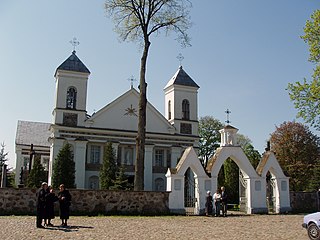 W
WValkininkai is a historic town in Valkininkų (Valkininkai) eldership, Varėna district municipality, Alytus County, Lithuania, located about 22 km (14 mi) northeast from Varėna and about 55 km (34 mi) southwest from Vilnius. At the 2001 census its population was 238 and at the 2011 census it was 229.
 W
WVarėna is a city in Dzūkija, Lithuania.
 W
WVasiuliškė is a village in Švenčionys District Municipality, in Vilnius County, in southeast Lithuania. According to the Lithuanian census of 2011, it had 1 resident. It is the birthplace of former Prime Minister, Kazimira Prunskienė.
 W
WVilnius is the capital of Lithuania and its largest city, with a population of 587,581 as of 2020. The population of Vilnius's functional urban area, which stretches beyond the city limits, is estimated at 700,275, while according to the Vilnius territorial health insurance fund, there were 729,923 permanent inhabitants as of May 2020 in Vilnius city and Vilnius district municipalities combined. Vilnius is in southeastern Lithuania and is the second-largest city in the Baltic states. It is the seat of Lithuania's national government and the Vilnius District Municipality.
 W
WZalavas is a small village in Švenčionys district municipality, Lithuania. It is located on the Mera river near the Lithuanian state border with Belarus. According to the Lithuanian census of 2011, it had 140 residents. It is the birthplace of Marshal Józef Piłsudski, who later became Chief of State of Poland.
 W
WLucjan Żeligowski was a Polish general, politician, military commander and veteran of World War I, the Polish-Soviet War and World War II. He is mostly remembered for his role in Żeligowski's Mutiny and as head of a short-lived Republic of Central Lithuania.
 W
WŻeligowski's Mutiny was a Polish false flag operation led by General Lucjan Żeligowski in October 1920, which resulted in the creation of the Republic of Central Lithuania. Polish Chief of State Józef Piłsudski surreptitiously ordered Żeligowski to carry out the operation, and revealed the truth several years later. The area was formally annexed by Poland in 1922 and internationally recognized as Polish territory in 1923. Nevertheless, Lithuania continued to claim the Vilnius region.
 W
WZujūnai is a village in Vilnius district municipality, Lithuania. According to the 2011 census, it had population of 1,660.